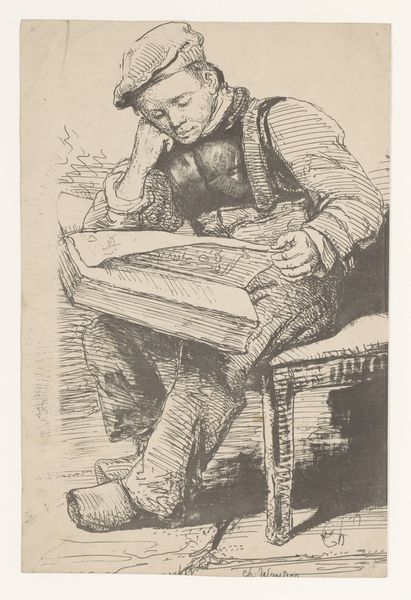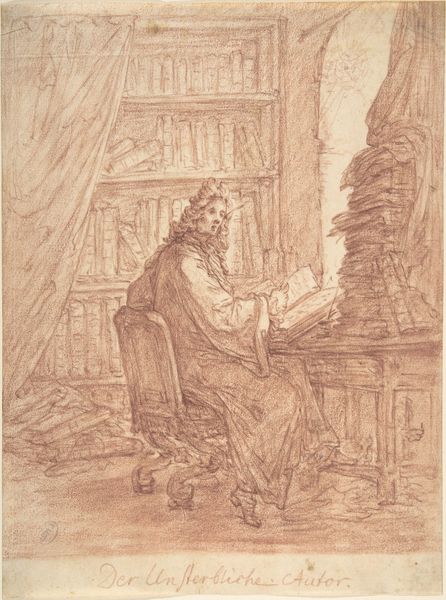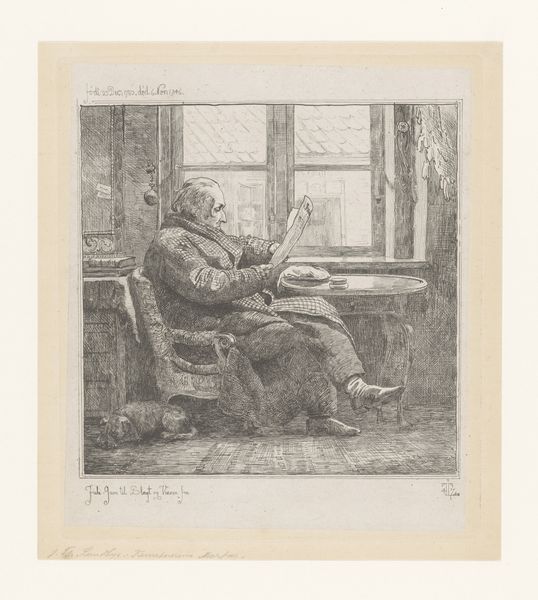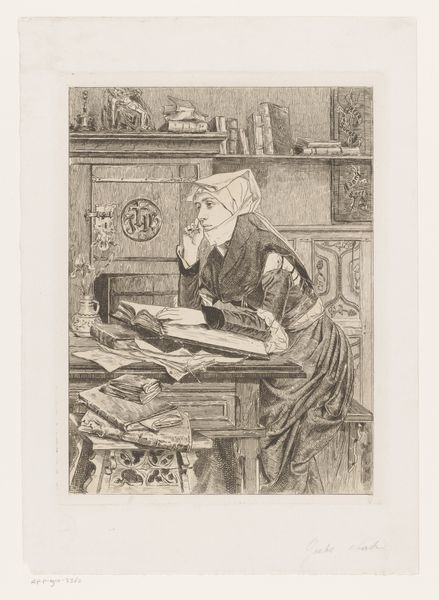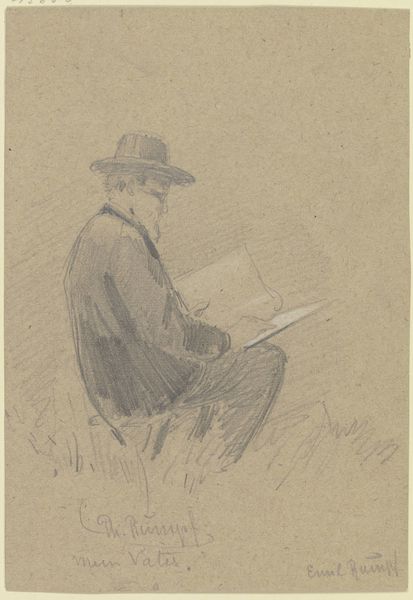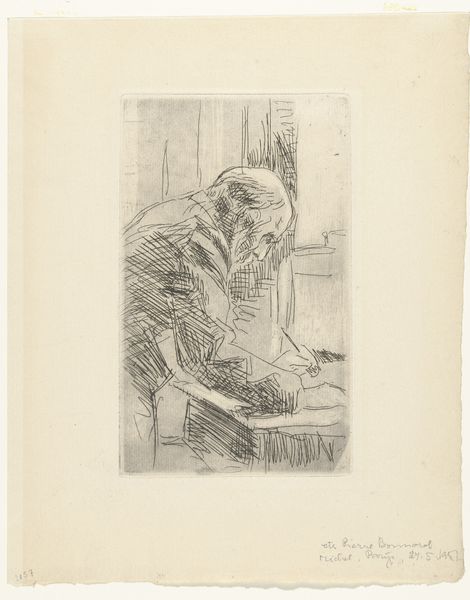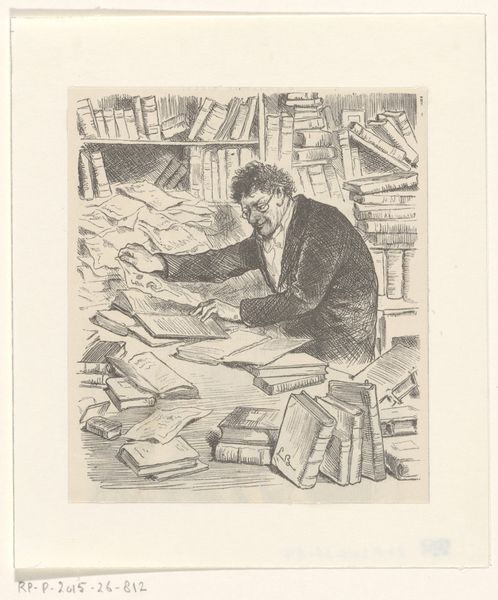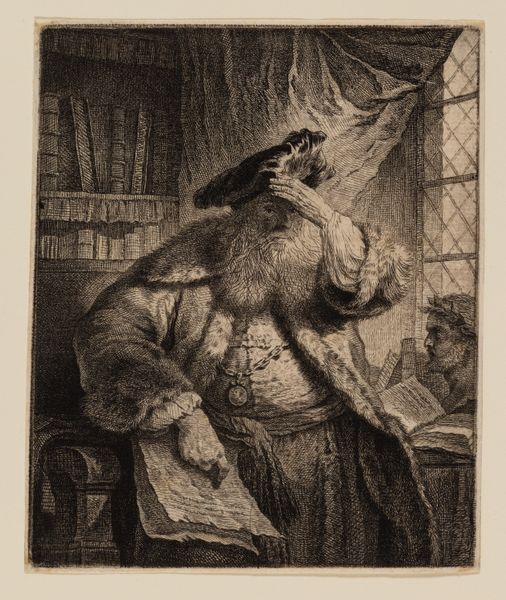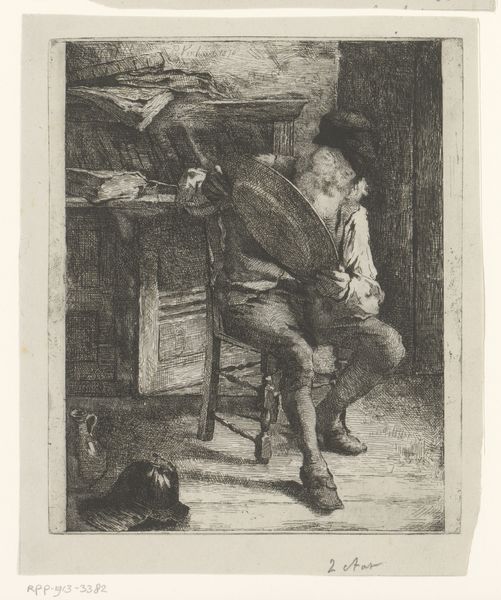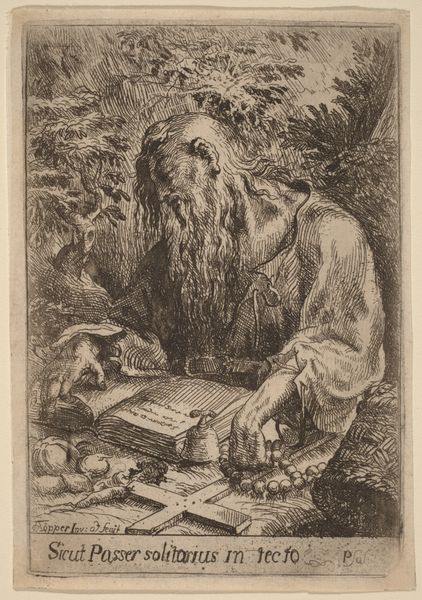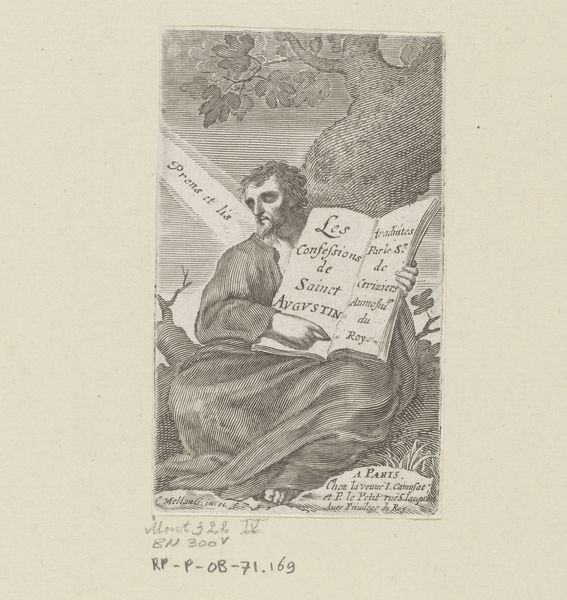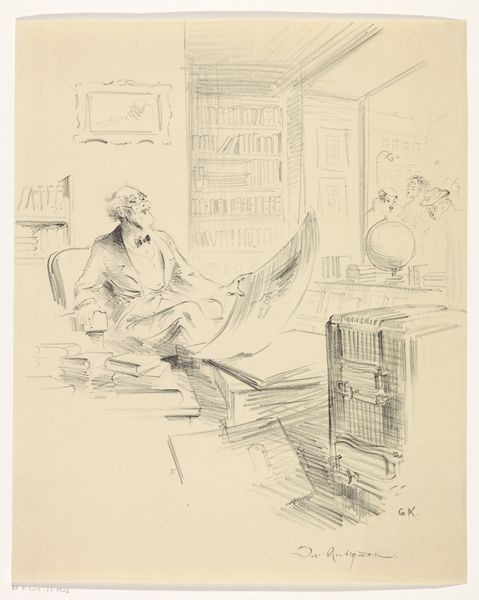
drawing, ink
#
portrait
#
drawing
#
ink
#
line
#
genre-painting
#
realism
Dimensions: height 102 mm, width 89 mm
Copyright: Rijks Museum: Open Domain
Curator: Looking at this piece, my immediate feeling is… nostalgia. It reminds me of browsing dusty bookstores on a rainy afternoon. Editor: Nostalgia's a good word. Let's ground that. The drawing, entitled "Man in een boekwinkel" which translates to "Man in a Bookstore", is an ink drawing, dating from around 1850 to 1900 and it’s attributed to Monogrammist LB. The lines suggest it might have been a print, mass-produced. Curator: Ah, that's interesting! You know, I’m almost more intrigued by what he's *not* reading, by what he’s seeking. Is it just entertainment or deeper meaning? Editor: We could even ask, "Why this man, here? Why record *this*?" It’s ink on paper, readily available. The labor involved is arguably less specialized, less precious than oil painting for instance. Curator: It does have that 'everyday' feeling. Yet, the way the lines create texture… the beard, the books... the light falling just so. There's a skill there. And this need to document just a simple, quiet moment. Editor: Yes, precisely. Think of the late 19th-century explosion in literacy, in affordable reading materials. It points towards a specific form of cultural production and consumption. Bookstores became sites of both commerce and public life, selling dreams made of printed material. Curator: That makes me think about what we consider art. Something accessible, created with commonplace materials, depicting an everyday subject… is it 'less than'? It challenges notions about what's 'worthy' of immortalization, doesn't it? Editor: Absolutely. The material itself isn't precious, but what is it making available in terms of social commentary? The very choice of subject tells us something about art's evolving relationship to labor and commerce. Curator: It does, it really does. I initially saw nostalgia; now I am seeing something more of an invitation into a world being democratized by printed materials. Thank you for changing my perspective! Editor: And I feel now, after talking this through, an impulse to go browse my favorite used bookstore this very afternoon. The artwork has made me want to reengage and reconsider art in everyday things.
Comments
No comments
Be the first to comment and join the conversation on the ultimate creative platform.
